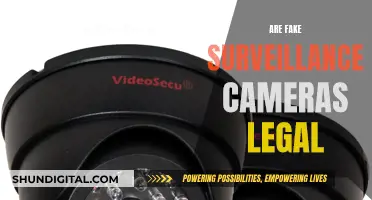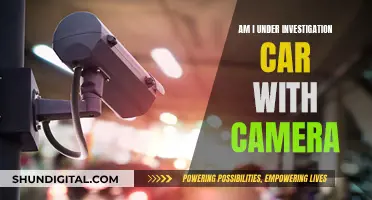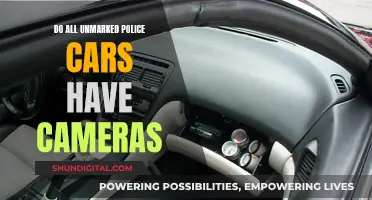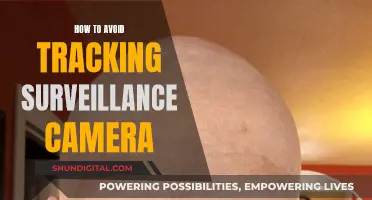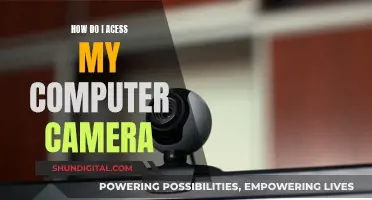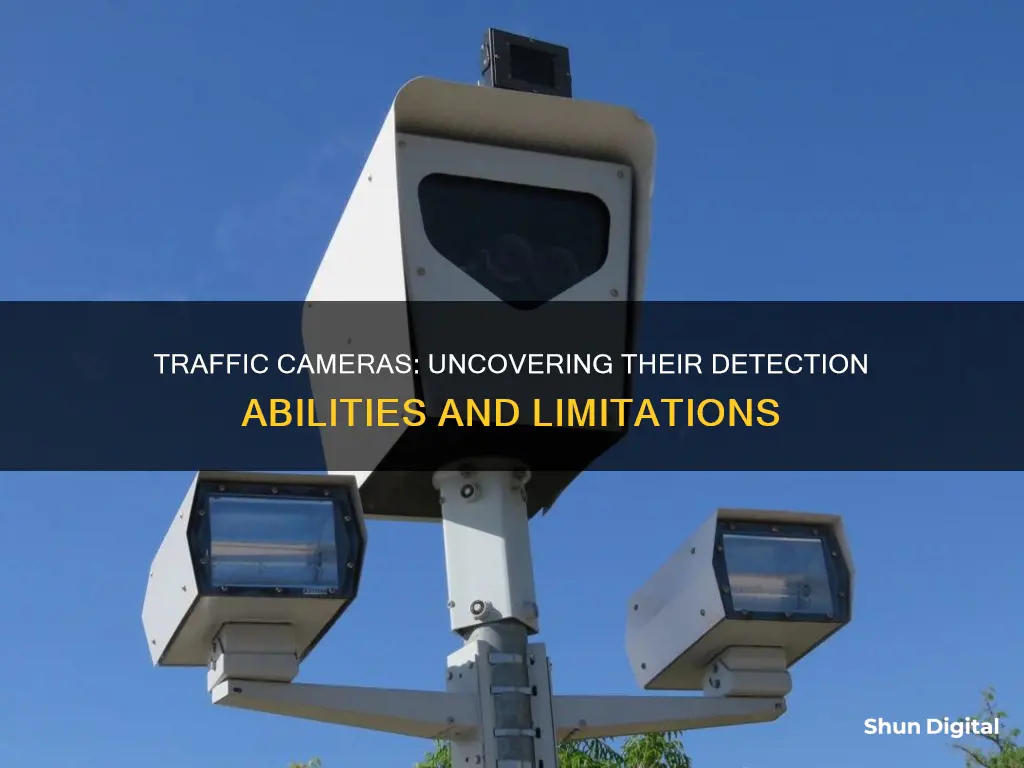
Traffic cameras are an increasingly common feature of roads in many countries. They are used to enforce traffic laws and can be used to detect a range of motoring offences, including speeding, red-light running, and the unauthorised use of bus lanes. There are several types of traffic cameras, including red light cameras, speed cameras, and automated number-plate recognition (ANPR) cameras. Red light cameras are placed at busy intersections and are triggered when a vehicle enters on a red light, capturing multiple images of the car during the violation. Speed cameras monitor compliance with speed limits and can be fixed or mobile. ANPR cameras are used for tracking drivers' whereabouts and can be fixed or mounted on police cruisers. While some argue that traffic cameras improve road safety, others criticise their use as an example of government overreach and a means of generating revenue.
| Characteristics | Values |
|---|---|
| Purpose | Detecting motoring offences |
| Motoring Offences | Speeding, red light violations, toll booth avoidance, unauthorised use of bus lanes, recording vehicles in congestion charge areas |
| Placement | Mounted beside or over a road, installed in an enforcement vehicle, on top of traffic signals, mounted high on light poles above roadways, on poles beside the road, attached to gantries over the road, on overpasses or bridges, concealed in garbage bins |
| Mechanism | Radar, LIDAR, stereo vision, automatic number-plate recognition, Doppler radar |
| Ticketing | Linked to an automated ticketing system |
| Data Recorded | Date, time, location, vehicle speed, time elapsed since the light turned red, time elapsed since the light turned yellow, vehicle's license plate number |
| Data Use | Tracking the whereabouts of drivers, identifying untaxed and uninsured vehicles, stolen cars, and mass surveillance of motorists |
What You'll Learn

Red light cameras
Red-light cameras are a type of traffic enforcement camera that captures images of vehicles that enter an intersection after the traffic signal has turned red. They are installed at busy intersections to deter dangerous driving, improve compliance with traffic signals, and reduce the risk of crashes. These cameras are triggered when a vehicle passes the stop bar after the signal has turned red, and they capture multiple images of the car during the violation.
The photographic evidence is then reviewed by law enforcement officials to determine if a violation occurred. A citation is typically mailed to the owner of the vehicle, who may be fined and in some cases, receive demerit points on their license. Red-light cameras are used in over 75 countries worldwide, including the United States, the United Kingdom, China, and Australia.
There is ongoing debate about the use of red-light cameras, with authorities citing public safety as the primary reason for their installation, while opponents argue that they are used more for financial gain. Some studies have shown that red-light cameras can lead to an increase in rear-end collisions as drivers may suddenly stop to avoid a ticket. However, they have also been found to reduce right-angle crashes and related injuries.
In the United States, red-light cameras have been implemented in several major cities, including New York City, Los Angeles, and Chicago. The usage of these cameras varies by state, with some states prohibiting their use altogether. The fines for violations also vary, ranging from $50 in New York City to approximately $500 in California.
Red-light cameras are typically installed in protective metal boxes attached to poles at intersections. They are easily identifiable by their bulkier size compared to other camera systems, and they often have multiple cameras at each intersection to capture angles from different directions.
Charging GH5 Batteries: In-Camera Method
You may want to see also

Speed cameras
There are two main types of speed cameras: fixed and mobile. Fixed speed cameras are usually mounted on elevated poles by the side of the road and are easy to spot due to their bulky weatherproof enclosures and external flashes. Mobile speed cameras, on the other hand, are more challenging to notice as they are not permanently mounted. They can be located on camera tripods or inside vans and are often moved around, making them harder to detect.
The Gatso camera is the most common type of speed camera in the UK, with nearly 4,000 in operation. It uses radar technology to detect speeding vehicles and captures two quick successive images to measure the vehicle's speed using white lines painted on the road. The Gatso is rear-facing to prevent its flash from blinding drivers.
Another type of speed camera commonly used in the UK is the Truvelo camera, which is forward-facing. It is activated by two sensors placed before the camera, and it uses infrared flash to capture images, reducing the risk of blinding drivers.
While speed cameras play a crucial role in road safety, some people argue that they are primarily used for revenue generation rather than improving safety. There have also been concerns about privacy and the potential for governments to establish mass surveillance of vehicle movements. Nevertheless, speed cameras remain a valuable tool for enforcing speed limits and improving road safety.
Monthly Fees for Cellular Cameras: What's the Deal?
You may want to see also

Traffic sensor cameras
The cameras are typically positioned on the traffic light or signal itself, which helps distinguish them from red light or speed cameras. Unlike enforcement cameras, the footage from traffic sensor cameras is generally not archived or used for incident reconstruction. Their main function is to collect data and aid in traffic management, rather than for surveillance or ticketing purposes.
While they may not be as noticeable as other types of traffic cameras, traffic sensor cameras play an important role in managing the flow of vehicles on our roads and can help improve the overall efficiency of the transport system.
Best Cameras for RAW Photography: Unlocking the Power
You may want to see also

Automated number plate recognition (ANPR) cameras
ANPR technology has become increasingly popular due to its wide range of benefits and applications. For example, ANPR is often used for traffic management, intelligent parking, toll automation, and journey time analysis. The technology is also used by police forces around the world for various law enforcement purposes, including checking vehicle registration and licence status, as well as identifying vehicles related to criminal activities and traffic violations.
One of the key advantages of ANPR cameras is their accuracy. These systems can quickly and easily identify vehicles by their license plates, making them a valuable tool for automated alerts and controls in smart cities and toll stations. Additionally, ANPR data can be used for traffic flow analytics, which is crucial for improving mobility and safety, reducing congestion, and effectively managing incidents.
Another benefit of ANPR cameras is their versatility. They can be integrated with other IT systems to enhance the user experience and offer new services, such as automated parking payments. ANPR is also used in security applications, such as controlling access to restricted areas and monitoring suspicious activities in retail parks and other locations.
In terms of technology, ANPR cameras typically use infrared lighting to capture clear images of license plates at any time of day or night. The cameras are designed to accommodate variations in license plate designs and formats across different jurisdictions. The image capture process involves several steps, including object detection, image processing, and optical character recognition (OCR) to extract the alphanumeric characters from the license plate.
While ANPR cameras offer numerous advantages, there are also privacy concerns and criticisms surrounding their use. Some critics argue that ANPR enables mass surveillance and government tracking of citizens' movements. There are also concerns about potential misidentification, high error rates, and increased government spending associated with the use of this technology.
Apple's Surveillance Camera Mystery: Fact or Fiction?
You may want to see also

Bus lane cameras
There are two main types of bus lane camera systems: fixed cameras and mobile cameras. Fixed cameras are mounted in specific locations near bus lanes, such as on poles or traffic signals, and continuously monitor the bus lane for any violations. On the other hand, mobile cameras are only used during the bus lane's operating hours and can be moved to different locations as needed.
When a bus lane camera detects a potential violation, it automatically records footage of the incident, usually capturing at least eight seconds of video evidence. This footage is then periodically reviewed by local traffic enforcement officers, who will determine if a violation has occurred. If a violation is confirmed, the officers will use the vehicle's registration details to send a penalty charge notice (PCN) to the owner of the vehicle.
The fine for driving in a bus lane varies depending on the location. For example, in Greater London, the fine is £160, or £80 if paid within 14 days. Outside of Greater London, the fine is typically £65, or £30 if paid within 14 days. Importantly, driving in a bus lane by mistake will not result in any points on the driver's licence, and it will not affect their car insurance premium.
It is worth noting that there are valid reasons for driving in a bus lane, such as during permitted operating hours or to make way for an emergency vehicle. If a driver believes they have been wrongfully issued a PCN, they have the right to appeal the decision. The appeal process is outlined in the PCN, and if necessary, individuals can take their case to an independent tribunal or court for further review.
In addition to fixed and mobile bus lane cameras, some cities have implemented bus-mounted enforcement cameras. These cameras not only monitor the bus lane but also help improve bus speeds and ensure the safety of passengers. By combining bus lane cameras with automated and human enforcement, cities can effectively speed up bus services and enhance overall traffic flow.
Focusing Your DJI Spark: The Go4 Way
You may want to see also
Frequently asked questions
A traffic camera is a device that may be mounted beside or over a road or installed in a vehicle to monitor and enforce traffic laws.
There are two main types of traffic cameras: red light cameras and speed cameras. Red light cameras are typically installed at busy intersections to detect when a vehicle enters on a red light, while speed cameras monitor and enforce speed limits and are often placed in less populated areas.
Red light cameras use sensors to detect when a vehicle enters an intersection during a red light. They capture images or videos of the violation, including the date, time, location, and vehicle license plate number.
Speed cameras utilize radar technology to detect when a vehicle is exceeding the speed limit. They capture images of the vehicle along with details such as the speed, date, time, location, and license plate number.
If a violation is detected, a citation is typically mailed to the registered owner of the vehicle. In some cases, you may have the opportunity to dispute the ticket in court or provide evidence that you were not the driver.


